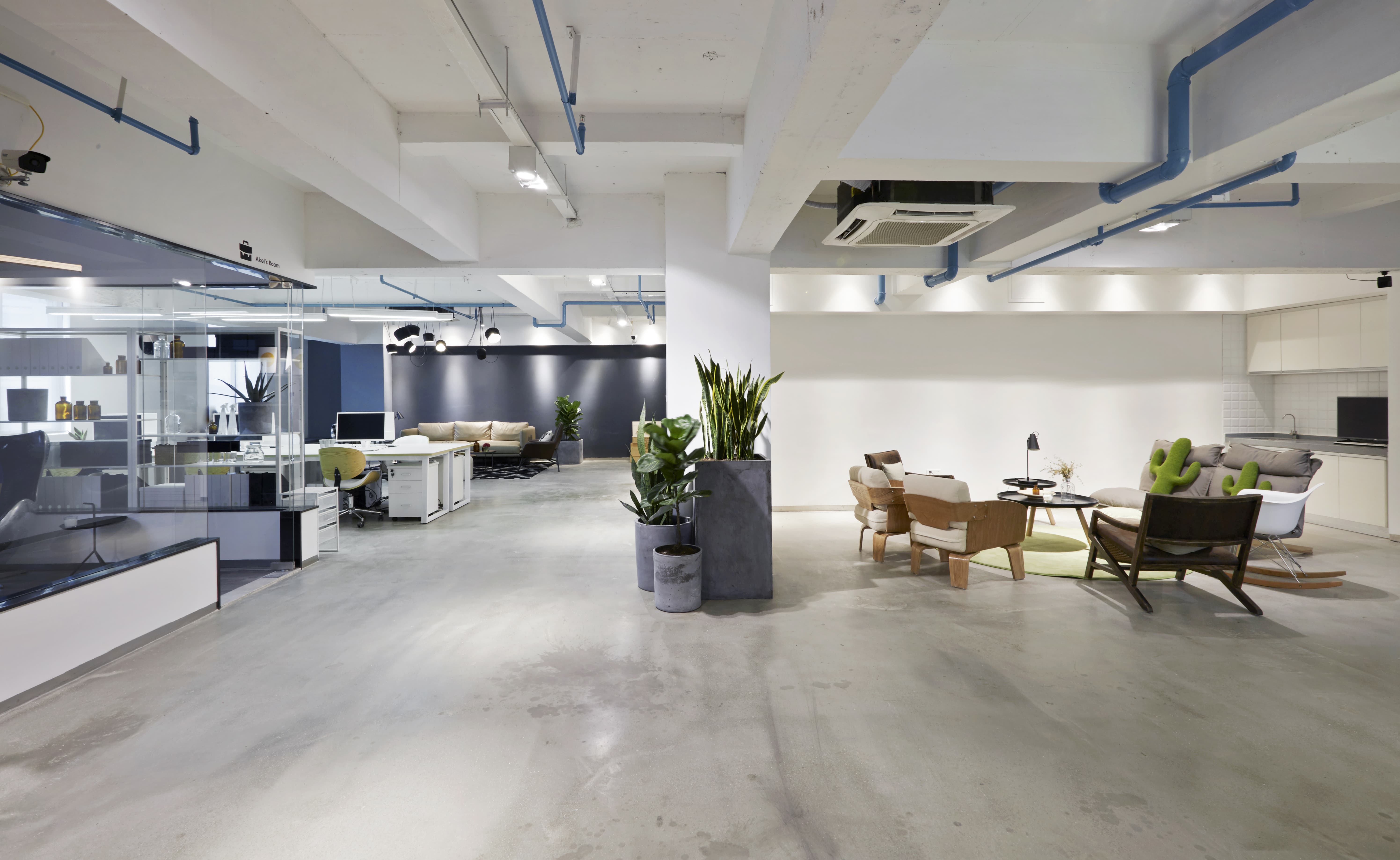The office has changed a lot over the last 50 years, from cubicle culture to open-plan spaces, rigid structures to agile working. Now we’re seeing the most important shift of all towards hybrid office design.
This metamorphosis isn't just a fashion of the decade; it's a reflection of deeper societal evolutions. Changes in working preferences, technology, and societal norms have driven this shift. The traditional 9-to-5 routine, with its fixed desks and rigid schedules, has been disrupted by a demand for flexibility, enhanced by technological innovations. The advent of smartphones, cloud computing, and teleconferencing tools has untethered us from our desks, making work a thing you do, not a place you go.
However, while we have these digital tools at our disposal, the need for human interaction, collaboration, and a sense of belonging remains vital. This is where the importance of hybrid workspaces emerges.
Office Design: Making Hybrid Work Possible
Generally considered a flexible working model where employees can work from multiple spaces, hybrid working is being woven into many organization’s workplace. This model brings multiple advantages such as increased autonomy and work/life balance, with the end goal being increased productivity and engagement.
Though the positive outcomes are plenty, this framework is not without its challenges. If implemented improperly, it can lead to misalignment between in-office and remote employees, along with unbalanced management and collaboration no matter where an employee is working from. Though these identified hurdles are valid, many can be addressed through office design and a thoughtful approach to creating an environment conducive to all working styles and locations.
As this transition picks up speed, it’s essential to optimize existing office spaces to support the unique needs of this structure.
The Power of Design in Hybrid Work
A hybrid workspace is more than just some employees working from home while others come to the office. It's a philosophy, an understanding that different tasks require different environments. It recognizes the importance of both collaboration and focused individual work.
But how does one create an environment that serves both these needs? Enter thoughtful, strategic office design.
Cultivating Community and Belonging: One of the potential pitfalls of remote work is the feeling of isolation. A well-designed office acts as a hub, a communal space where employees can reconnect. Truspace's redesign of Webber Naturals' Toronto office is a prime example. The use of glass fronts promotes transparency, openness, and a sense of belonging. Beyond physical design, technological solutions are also pivotal. High-quality video conferencing tools ensure that remote workers feel as included as their in-office counterparts.
Agility at its Core: The future of work is fluid, and our workspaces must reflect this. Fixed desks and static environments can stifle creativity. Instead, spaces that can be easily reconfigured for brainstorming sessions, team meetings, or solitary work are crucial. This philosophy doesn't just stop at furniture. It's about integrating technology in a way that's intuitive. Employees, whether they're working remotely or in the office, should have all the tools they need at their fingertips.
Productivity: A Balancing Act: One of the major reservations that companies had about remote work was the question of productivity. But, as many have found, productivity isn't so much about where you work, but how. Thoughtful office design can cater to this. By providing areas for deep, focused work – think soundproof rooms or ergonomic furniture – employees can find their zone. On the other end of the spectrum, open areas encourage spontaneous collaborations and discussions. Truspace's design for WealthCo encapsulated this balance, ensuring spaces for both collaboration and solitary work coexisted harmoniously.
Wellness at the Forefront: The modern worker is more conscious than ever about well-being. An office should be more than just a place to work; it should promote health and wellness. Biophilic designs, which integrate elements of nature into the workspace, have been shown to boost mood, reduce stress, and enhance creativity. Natural light, plants, and even the sound of water can transform a workspace. Moreover, casual seating areas, reminiscent of a cozy living room, can make employees feel at ease, blurring the lines between home and work.
The Dawn of a New Era: Hybrid Spaces
The hybrid workspace is not just a fleeting trend; it's a response to the evolving demands and preferences of the modern workforce. While challenges exist, they're not insurmountable. With expertise and a deep understanding of both design and work culture, companies like Truspace are leading the charge in this revolution.
The rewards of a well-executed hybrid workspace are manifold. Increased productivity, enhanced employee well-being, and a strong sense of community are just the tip of the iceberg. As we move forward, it's evident: the future of work is hybrid.
For those keen on diving deeper into the nuances of designing for the modern worker, stay tuned. Our upcoming post will shed light on the critical role of people-centric design in shaping the hybrid workspaces of tomorrow.

.jpg)

.jpg)
.jpg)